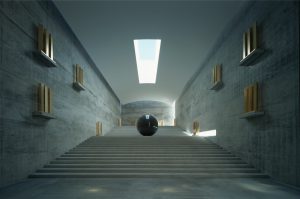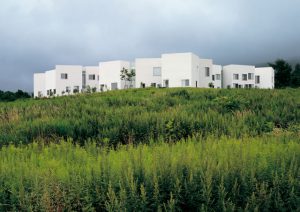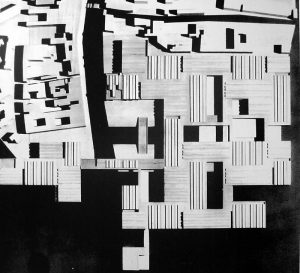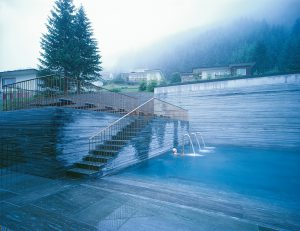New Urban Asylum: Addressing Increasing Demand of Mental Health Tourism in Japan
|
– Introduction – This thesis attempts to respond on the issue of imbalance resource distribution between foreign mental healthcare seekers and local stakeholders brought by Medical Tourism – especially newly-introduced Mental Health Tourism. It aims to mediate the mere development on Tourism and Mental Healthcare Facilities and seek an alternative to bridge these two together by practising the theory of Architectural Determinism, which provide us ground to link architectural design, such as spatial configuration and environment study, with human mental wellness. – Background – Japan Committee for Prevention and Treatment of Depression (JCPTD) suggests that a conservative estimation of 6.6% of Japanese people suffers from at least one kind of depression due to stress from social value, work culture and domestic issues. Though it is a huge improvement comparing to 40 years ago, Japanese people are still generally reluctant to seek profession support, and the mental healthcare system is still underused. Beside intensifying the education on mental wellness, Japanese government lately start promoting Mental Health Tourism to attract overseas patients to share the resources on mental healthcare. Japanese government has already given the green light to share service with foreign patients by altering its course in 2010. Since the high standard of medical service in Japan has been long recognized – there were over 60 thousands of foreign patients sought medical care last year – it is a mature system to support the industry of Medical Tourism. The success of Medical Tourism leads Japan to expand the industry to the field of Psychiatry. – WHY? – Japanese government will presumably advance and expand its medical service to support the upcoming development. However, if social awareness on mental wellness and importance of psychiatrical treatment is still in the unsatisfactory state, there will be an outflow of resources from the country. The imbalance of resource distribution may probably occur and it in long term can undermine the situation of national mental wellness. This thesis seeks an alternative to professional medical assistance, and promote the therapeutic power of architecture under the theory of Architectural Determinism. This model can also be treated as an experiment on the purpose of developing it as a prototype, which it can be evolved and applied onto other asian countries or fine-tuned to fit to different cultural milieus with comprehensive Medical Tourism system. // Architectural Determinism It is a theory of claiming built environment is the chief or even sole determinant of social behaviors. We live in buildings, and inevitably our behaviours and emotions clings to those walls and ceilings. By manipulating space, and programme arrangement, architecture can be potentially transformed into our representation of emotions. // Evidence-based Design Evidence-based Design (EBD) has been introduced to many hospitals, community health centers and residential care centers to evaluate the influence between the physical environment and human well-being on the future new construction, expansion and remodeling. – WHAT? – This thesis will not dive into the analyses or discussions of professional psychiatric service programmes, nor setting the serious mentally-challenged as target users. Instead, the design is seen as an opportunity to merge the need of social mental wellness awareness and psychiatric relation to architecture, and an architectural experiment to develop a new prototype for such. Thus, it is planned to mediate the areas where in between professional medical service center and mere tourist spots for relaxation, and provide an option to the stressed metropolis to relieve their emotion lest they develop their suppressed emotion into serious mental illness which can only be handled by professional practitioners. // Urban Asylum The word is used not only to show its association to psychiatric treatment, but also indicate it for a possible shelter or getaway for the metropolis. – HOW? – There are few possible directions which can be looked into in the next stage (**Implication of these ideas will be deduced and analysed later.) // Philosophy of Zen The philosophy of Zen has significantly shaped Japanese architecture design after the period of Post-modernism. Neutrality of physiognomy has been again raised to emphasize the important function of architecture that to bring harmony and space together. The principle idea of Environmental Determinism has been strengthened and evidenced by Japanese architects like Tadao Ando, it however stayed in the theoretical level, which never links to psychiatric practice. Study of Zen is part of the cultural analysis which gives ground to the action of bridging medical service with spatial relaxation. // Spatial Arrangement for Environmental Harmony Careful study on dimension and scale, atmospheric rhythm, spatial sequence, geometrical configuration and programmatic order, with an thorough understanding of built surroundings helps create spatial harmony which goes with good mental state.
// Natural Resources Natural resources can be exploited to work with buildings to advantage the ideas of connecting city to the country and activate sensory experience to human beings. Onsen (Hot Spring) and its philosophy is part of soul healing culture in Japan that claims the natural gift of peacefully pulsating rhythm owns healing ability to our inner part of spirit. – Bibliography – // Junko Kitanaka, Depression in Japan: Psychiatric Cures for a Society in Distress, Princeton University Press, 2011 // Roger Pulvers, Depression is a national ailment that demands open recognition in Japan, Article from The Japan Times, Feb 2012 // Paul-Alan Johnson, The Theory of Architecture: Concepts, Themes, and Practices, Van Nostrand Reinhold, 1994 // Janet Semple, Bentham’s Prison: a Study of the Panopticon Penitentiary. Oxford: Clarendon Press, 1993 // Arata Isozaki, Edited by David B. Stewart and translated by Sabu Kohso, Japan-ness in Architecture, MIT Press, 2006
– WHERE? – will be determined in the next stage |





One Comment